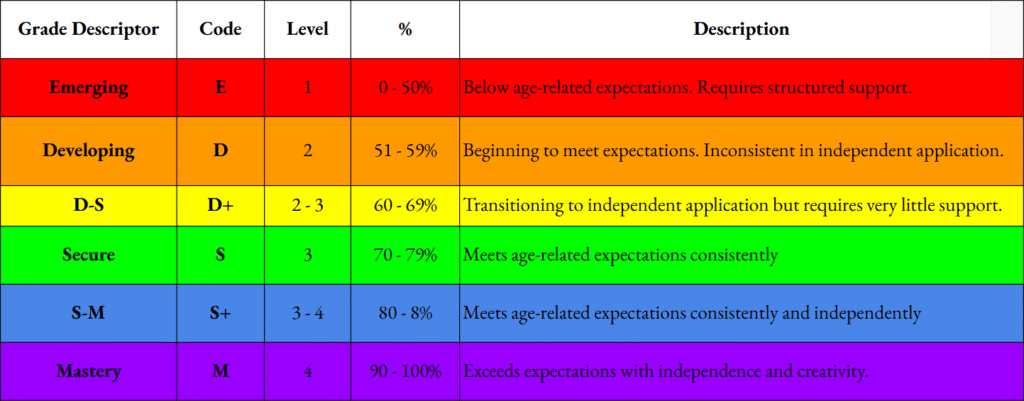At Shakhsiyah Schools, the aim of assessment in the secondary school is to nurture every student holistically so they can fulfil their potential. We achieve this by:
Throughout Years 7, 8, and 9, students are assessed every half term through:
Teachers use subject-specific assessment criteria to make these judgements. These criteria are supported by “I can” statements, which track the knowledge, skills, and understanding students are expected to demonstrate at each stage.
Progress is reported using the following grading system:

This ensures that students and parents have a clear picture of progress, while teachers can target support and challenge appropriately.
In Years 10 and 11, assessment becomes more formalised in preparation for GCSEs. Students are assessed through:
Teachers continue to use subject-specific criteria and “I can” statements to assess learning, ensuring alignment with GCSE requirements. Alongside formal assessments, classwork, independent work, and participation remain important indicators of progress.
As students move through KS4, their performance is tracked carefully using our assessment trackers, which outline expected learning outcomes by year group. This enables us to provide accurate and personalised feedback to students and parents.
Teachers continue to use subject-specific criteria and “I can” statements to assess learning, ensuring alignment with GCSE requirements. Alongside formal assessments, classwork, independent work, and participation remain important indicators of progress.
As students move through KS4, their performance is tracked carefully using our assessment trackers, which outline expected learning outcomes by year group. This enables us to provide accurate and personalised feedback to students and parents.
By Year 11, with most of the curriculum completed, teachers are able to provide predicted GCSE grades. These predictions are based on a range of evidence, including:
It is important to note that these predictions represent our professional judgement at a given point in time. Like a weather forecast, they are not guarantees of final results, but they provide a clear indication of likely outcomes if current effort and progress are maintained.